Saving Italy’s Artistic Heritage Posted by Geoff on May 19, 2014 in Uncategorized
|
What would it be like to fight a war inside a museum? |
Not long ago I had an e-mail from a long time follower of our blog, William Auge, telling me about a fascinating book he’d just finished reading called Saving Italy by Robert M. Edsel. “How about writing a guest blog for us Bill?” I replied “perhaps you could do a mini review of the book”. Bill rose to the challenge, and yesterday mailed me the following article:
What would it be like to fight a war inside a museum? That was the situation for German and allied troops fighting for control of Italy during World War II. Allied aerial bombing of Northern Italian cities began in 1940, inflicting heavy damage on Milan, Genoa and Turin. By July of 1943, with the Italian populace tired of the suffering created by the war, Mussolini was removed from office. On Sept. 8, 1943 Italy surrendered to allied forces. Two days later Germany seized Rome and placed Italy under their military control.
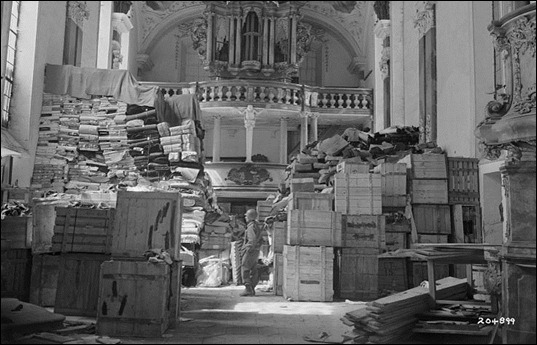 |
| German looted art stored at Schlosskirche Ellingen, Bavaria. |
As allied forces prepared to invade Italy, many of the world’s cultural and artistic treasures faced new dangers. Leaders of the United States and Britain understood that an effort must be made to safeguard Italy’s cultural heritage from the war’s destruction. With this concern in mind the MFAA (Monuments, Fine Arts, and Archives Program) was formed which consisted of a small group of scholar soldiers, the Monuments Men, whose task it was to minimize the damage to Italy’s art and architecture, make repairs when possible and locate and return stolen works of art.
Author Robert M. Edsel has written an informative and enjoyable book concerning this important chapter in history. Reading this book you are filled with sadness at what was lost, and wonderment at what was preserved under such dangerous circumstances. Museums across Italy were emptied and their contents moved to numerous locations, some traveling as far as Austria and Germany over damaged and dangerous roads.
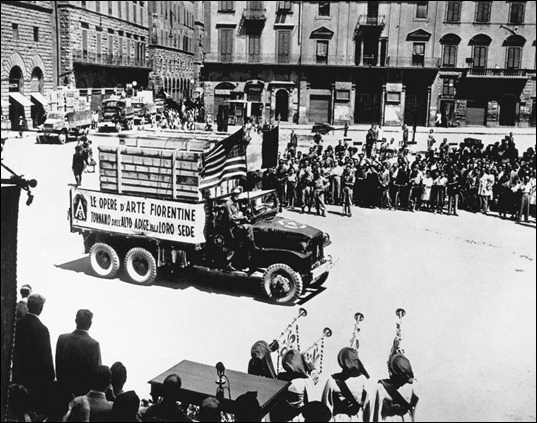 |
| Florentine art returns home at the end of the war. Le Opere d’Arte Fiorentine Tornano dall’Alto Adige alla Loro Sede, reads the banner on the lorry. |
Only the cities of Rome, Venice, Florence and Torcello (an island near Venice) were considered off limits to any bombing without special authorization. But this did not make them immune to damage. In Florence, for example, the retreating German army blew up all the bridges over the Arno River except Ponte Vecchio. Possibly the greatest miracle of survival was Leonardo da Vinci’s painting of the Last Supper. The church of Santa Maria delle Grazie in Milan was heavily damaged by aerial bombing with only the wall containing Leonardo da Vinci’s masterpiece surviving!
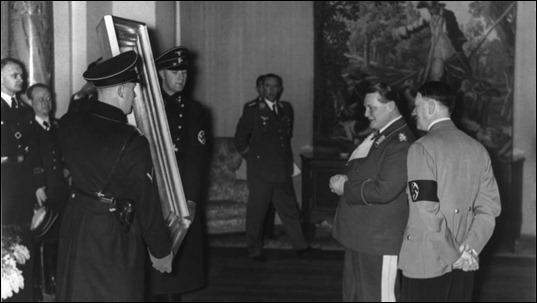 |
| Hitler and Göring inspect a confiscated painting. Göring amassed a huge private collection of stolen art during WWII. |
This is a great book to add to your summer reading list. Especially if you are interested in history and Italian culture and art. One cannot help but contemplate how dangerously close the world came to losing many of its greatest creative achievements, and how poorer we would all be if not for the work of the MFAA and their Italian counterparts.
William Auge
Bill has certainly whet my appetite, and I intend to try and find this book here in Italy. I’ll also be following up on this blog with an article about the Italian Monuments Men. Rimanete sintonizati! (stay tuned!)

Build vocabulary, practice pronunciation, and more with Transparent Language Online. Available anytime, anywhere, on any device.



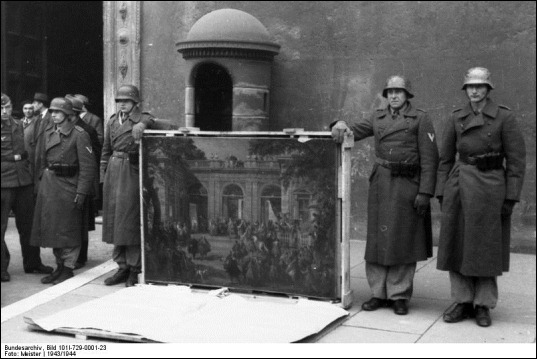
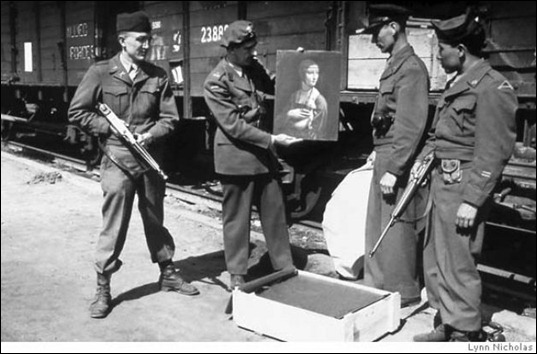

Comments:
Gary Yellin:
Thanks to Mr. Auge for his review. For me, it was timely as I just watched the documentary “The Rape of Europa” which is based on the book of the same title by Lynn H. Nicholas (who is also a main presenter in the documentary.) It is a remarkable film with vintage footage of the Nazi high command and their looting of so much of Europe’s art treasures and the tireless efforts of the MFAA (the Monuments Men) and their remarkable achievements to find and return what they found. Anyone interested in this fascinating and tragic chapter of the last century should see this film.
Gary
Michele Mandrioli:
Anch’io ho letto questo libro alcune settimane fa. (L’ho comprato a Amazon.com). Sono stata in Italia cinque volte e ho visto molte opere d’arte. Grazie molto, “Monuments Men”!
Bob Blesse:
Lovely review. Edsel’s book is available on both Amazon.com (USA) and Amazon.co.uk (UK). Great read, as Mr. Auge says. Thanks!
Guest:
In the US, there is a movie called The Monuments Men based on this book starring George Clooney.